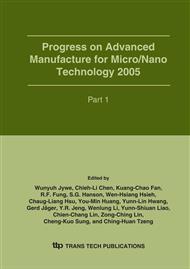p.679
p.685
p.691
p.697
p.703
p.709
p.715
p.721
p.727
Computer Modeling of Extrusion by the Rigid-Plastic Hybrid Element Method
Abstract:
In this paper, a rigid-plastic hybrid element method is formulated, which is a mixed approach of the rigid-plastic domain-BEM and the rigid-plastic FEM based on the theory of slightly compressible plasticity. Since compatibilities of velocity and velocity's derivative between adjoining boundary elements and finite elements can be met, the velocity and the derivative of velocity can be calculated with the same precision for this hybrid element method. While, the compatibility of the velocity's derivative cannot be met for the rigid-plastic FEMs.
Info:
Periodical:
Pages:
703-708
Citation:
Online since:
January 2006
Authors:
Price:
Сopyright:
© 2006 Trans Tech Publications Ltd. All Rights Reserved
Share:
Citation:


